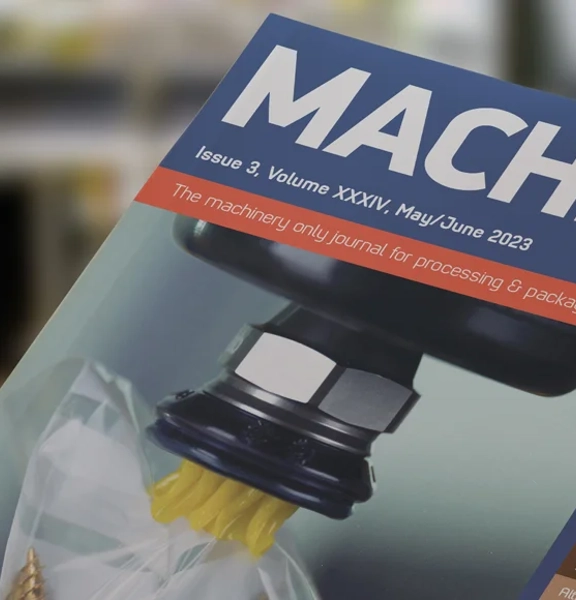Become a member
Take advantage of exclusive member benefits, world class events, networking and specialist support








 Become a member
Become a member 

4 March 2025
The integration of robotics is having a transformative impact on packaging production lines, with manufacturers realising such benefits as increased efficiency, improved safety, and reduced costs. This trend looks set to continue, given the ability of robotics equipped with advanced technologies to perform a wide variety of tasks. Indeed, the global industrial robots market is projected to grow from USD 16.89 billion in 2024 to USD 29.43 billion by 2029. We’ll look at the production line benefits here.
From palletising to sealing and labelling, robotic systems are automating an increasing range of production line processes. This will increasingly be the case, with more manufacturers investing in smart, adaptive robotics. The adoption of collaborative robots (cobots) is also bound to grow, with human workers able to rely on robotic support in the completion of tasks in the dull, dirty, and dangerous categories. The automotive sector accounts for much of this growth, with installations in this sector rising by 297% to 1,924 units in 2023. However, we’re also seeing the greater adoption of robotics across such sectors as pharmaceuticals, consumer goods, and food and beverages.
Robotic systems can perform various production line tasks with much greater speed and efficiency than humans. The integration of such systems also allows for continuous production, with minimal downtime. As an example, the September/October 2024 edition of Machinery Update focused on the addition of the Pacepal collaborative robot to the Pace Mechanical Handling portfolio (page 22). Designed with the priority of human safety, this cobot can palletise up to 15 cases or cartons of fruit and vegetables per minute.
Integrated with advanced vision systems, robots can also perform production line tasks with outstanding precision. Manufacturers can rely on such systems for proper sealing, labelling and alignment, with packaging defects and irregularities being automatically detected. For instance, the September/October 2024 edition of Machinery Update covered the enhancement of a robotic depalletiser with two Esenso 3D cameras from IDS Imaging Development Systems. Destacking up to 800 parcels per hour, the intelligent robotic system also reduces the risk of injury and frees up human workers for higher-level tasks.
Complete with advanced sensors, robotic systems provide real-time data on everything from cycle times to error rates. Reference to this data enables manufacturers to identify the need for downtime-reducing maintenance. It also enables streamlined production planning and inventory management. A range of packaging facilities are drawing on robotic data insights for the optimisation of material use and reduction of costs.
The integration of autonomous mobile robots (AMRs) is also becoming more common. Complete with technologies for sensing, mapping, and navigating, these AMRs are increasingly preferred to forklift trucks for the movement of heavy and bulky goods. Adapting to dynamic layouts, they also reduce bottlenecks in production flow. As an example, Diva International has transformed its system for the transportation of wet wipes from production to palletising with five Omron AMRs. This has made for improvements of efficiency, safety, and flexibility.
Of course, there are a number of factors to be considered when it comes to the integration of robotics. Manufacturers are commonly daunted by the investment of time and money needed to realise the full potential of such systems. However, the initial costs must be weighed against the longer-term financial benefits, with robotic automation in manufacturing processes shown to reduce operational costs by up to 30%. There’s also been a growth in the availability of accessible and user-friendly systems for small and medium-sized enterprises.
Other key considerations include:
There’s a clear need to bust the ‘robots take jobs’ myth, with companies instead coming to realise the ability to address workforce challenges through automation. Robots should be seen as one of the main solutions to the filling of vacant jobs, with human workers having more opportunities to take on fulfilling and rewarding responsibilities. This will increasingly be the case, given the development of smarter AI-integrated robots at prices that more companies can afford.
You can look forward to building your knowledge and further exploring the potential of robotics with a visit to Automation UK 2025. Held at Coventry’s CBS Arena from the 7th to the 8th of May, the leading industrial automation, robotics, and vision show will also provide the opportunity to expand your network and learn from leading industry experts. Go ahead and book your free ticket today.